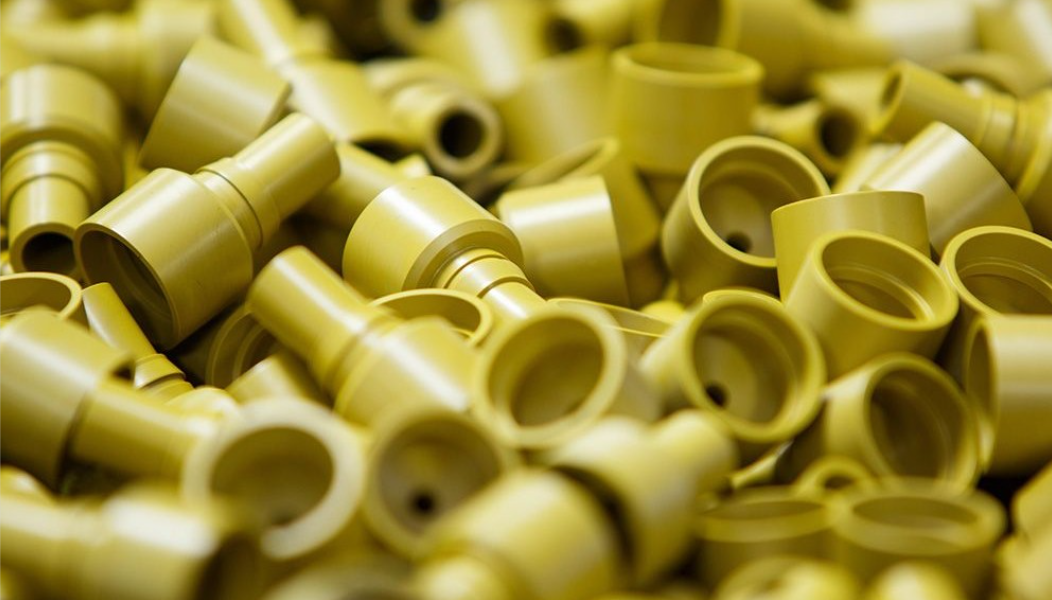In the present world, CNC machining has gradually become a trend in mechanical machining, but manual machining still occupies a place. Because the cost of CNC machining is much higher than that of manual machining, and CNC machining also needs people with manual machining experience to operate smoothly. So manual machining still has an irreplaceable position.
Manual machining involves machining parts on an engine lathe or manual milling machine, and the operation of a manual machine requires a skilled machinist with a “feel”. Generally speaking, manual machining involves milling, lathing, and grinding. We will talk about these three types of manual machining.
Milling
Milling is the most common form of machining, a material removal process that creates a variety of features on parts by cutting off unwanted materials. The milling process requires milling machines, workpieces, fixtures, and cutters. The workpiece is a piece of preformed material fixed on the fixing device, which itself is fixed on the platform inside the milling machine. A cutter is a cutting tool with sharp teeth, which is also fixed in the milling machine and rotated at high speed. By feeding the workpiece into a rotating cutter, the material is cut from the workpiece into small pieces to form the desired shape. Milling is often used to produce parts that are not axially symmetrical and have many features, such as holes, grooves, pits, and even three-dimensional surface profiles.
Lathing:
A lathe is a machine tool used mainly for turning the rotating workpiece with a turning tool.
In a metalworking lathe, metal is removed from the workpiece by means of a hardened cutting tool, usually fixed to a movable fixture (tool rest or turret), and the metal is then moved relative to the workpiece using a handwheel or a computer-controlled motor. These cutting tools come in a variety of sizes and shapes depending on their application. Some common patterns are diamond, circle, square, and triangle. Common operations performed on a lathe include drilling, boring, threading, internal and external grooving, and die parting. When you want to create fast, repeatable, symmetrical cylindrical parts, lathes are the best choice.
Grinding:
Grinding is a grinding process in which the grinding wheel is used as a cutting tool. Grinding is a broad and diverse field of manufacturing and tool manufacturing. It can produce a very good finish and very precise size. In mass production, however, it can also be used to roughen large quantities of metal fairly quickly. It was generally better suited to the processing of very hard materials than “conventional” machining (in which cutting tools such as tool bits or milling cutters cut large chips), and until recent decades it was the only practical way to process such materials. Grinding is also part of cutting.
Our common grinding methods include cylindrical grinding and surface grinding.
Cylindrical grinding (also known as central grinding) is used to grind the cylindrical surface and shoulder of the workpiece. The workpiece is mounted in the center and rotated by a device called a lathe or center drive. The grinding wheel and the workpiece are rotated at different speeds by separate electric motors. The table can be adjusted to produce taper. The wheel head can rotate.
The surface grinder consists of a grinding wheel, an electromagnetic or vacuum table (called a chuck), and a reciprocating table. Grinding is commonly used in cast iron and various types of steel. These materials are easy to grind because they can be held by the electromagnetic chucks commonly used on grinders without melting into the wheel, blocking it and preventing it from cutting. Less frequently ground materials are aluminum, stainless steel, brass, and plastics. These are easier to block than steel or cast iron but can be ground with special techniques.
Here are some reasons why manual machining is still needed:
1. Reduce risk
When using a manual lathe for machining, you can control all operations at any time, when the lathe is in automatic feed, you can observe multiple clearance points from any Angle, if there is a problem, you can stop the operation of the lathe in time. For example, if you feel the vibration of a machine or steel, you can cancel the operation in time to avoid greater loss. To make sure the CNC lathe runs smoothly, you need to draw a drawing and carefully examine every possible crash site before you run anything. And you need to plan ahead for manual checks and adjustments on the CNC.
2. Lower capital
Unlike CNC milling machines, the cost of manual machines is not high. They don’t need a lot of components or space to operate, which makes them the first choice for a startup.
3. No programming
It takes a lot of programming to make a CNC lathe work properly. With manual milling, you don’t have to worry about programming or the time it takes to make sure the details are correct.
4. Shorter turnaround time
Using manual milling, it takes less time to produce parts. There are not as many steps involved as CNC milling, so it usually takes less time to prepare the workpiece.
5. This is a good support
Manual milling is good support for CNC milling. When processing large items in CNC milling, manual milling can be used to process smaller items.





